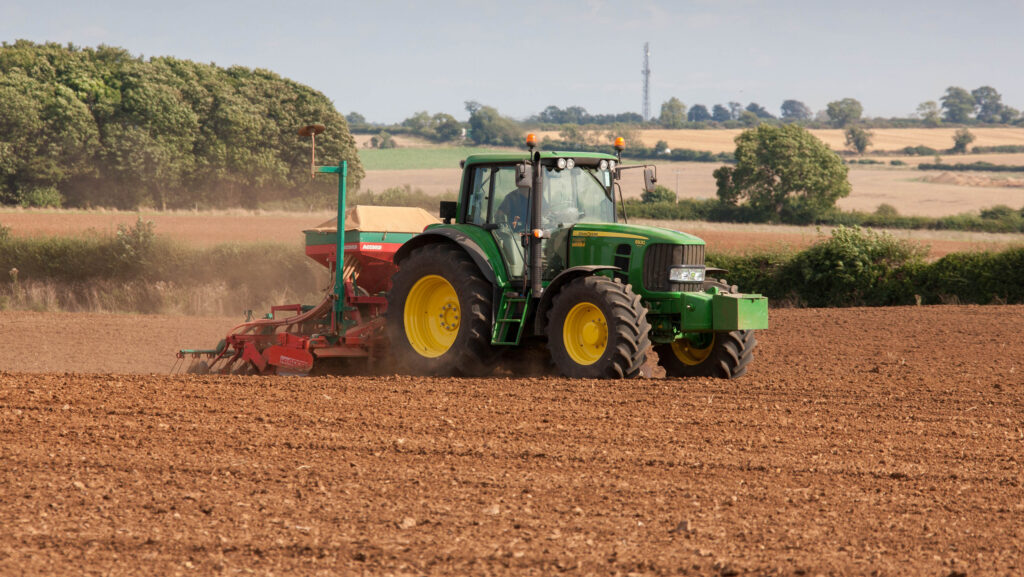3 establishment tips for growers sowing OSR early this year
 © Tim Scrivener
© Tim Scrivener The early start to harvest and the arrival of rain mean has prompted farmers to establish oilseed rape crops earlier than usual.
By the end of July, agronomy firm Agrii had witnessed a 50% uplift in oilseed rape seed sales compared with the same period last year.
Agrii seed technical specialist David Leaper says: “The OSR sowing season has begun earlier than usual – even considering the historic trend of earlier drilling to establish crops ahead of cabbage stem flea beetle (CSFB) attack.
See also: 4 ways to solve common soil issues on arable farms
Reports also indicate a likely upturn in the overall national crop area following a 40-year low for the crop just harvested.
Promising yields this season have boosted grower confidence in the crop, with AHDB reports so far revealing a 21% increase above the five-year average yield.
“Add to that a price above £400/t, and it is easy to see why farmers may see it as worth sowing this season,” says David.
Although early drilling allows the crop to become established before the main adult CSFB migration in mid-to-late August, it can bring agronomic challenges.
“The risk of cabbage root fly increases, as does clubroot, verticillium, light leaf spot and grassweed pressure,” he says.
“It also exposes the crop to more risk from CSFB larval damage. My concern is that by focusing on adult CSFB, we may exacerbate problems with other pests.”
But with land cleared and ready to go, what can oilseed rape growers do to set up next year’s crop for the best start?
David highlights three areas to focus on:
1. Consider sowing a companion crop now and the OSR later
Companion crops help hide small OSR plants from adult CSFB, both visually and by masking the volatile compounds emitted by oilseed rape, which attracts the pest.
They also improve soil structure and increase nutrient availability for the crop.
Most companion crops are sown at the same time as the OSR because of time pressures, but an early season allows the sowing to be split, explains David.
“The advantage of splitting the drilling is that, in a month’s time, there will be a good green cover to sow the OSR into, protecting the crop and negating any of the difficulties that come with an early sowing.
2. Adjust seed rates
“Historically, we have always advocated sowing hybrid varieties at 50 seeds/sq m, but with CSFB, this has crept up to around 60 seeds/sq m.,” says David.
“Sowing early allows the opportunity to go back down to 50, you could even go lower to 40 seeds/sq m, but as you still need to account for potential losses, I’d recommend no lower than 40.”
Reducing the sowing density will account for an extra month’s growth. It also has benefits further on in the year by providing more room for additional branching in the spring, he explains.
This can help mitigate the effects of CSFB larvae by keeping them out of the main stem and in the lower side branches, where their yield impact is minimal.
3. Select the right variety
With early drilling, farmers are tackling one issue – the adult CSFB – while opening the door to another – the CSFB larvae.
However, David says that the right variety can help alleviate some of the additional pressures an early drilled crop is subjected to.
“You need a variety with good light leaf spot and Verticillium resistance, as well as an adaptable growth habit which can compensate for any damage once it gets going again in the spring.
Agrii trials over several years show a strong relationship between larval damage and early spring biomass, which then corresponds to yield.
“One variety that has stood out with its early spring biomass is Kanzzas. It also has the best light leaf spot score of any variety we have ever tested,” he says.
“Kanzzas is very adaptable to the situation, with its growth habit also suiting a later planting if there’s a change of plan.”

